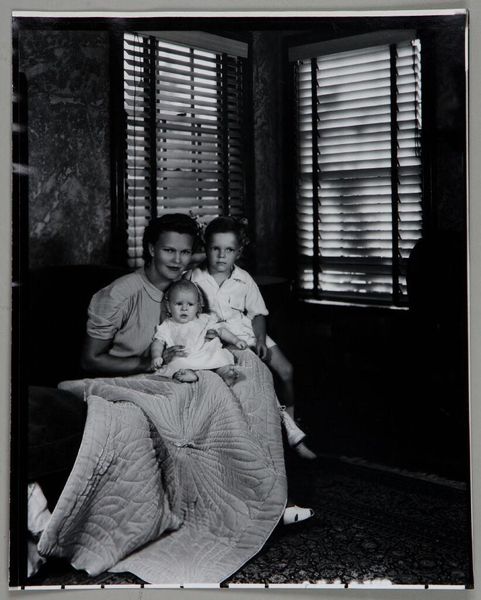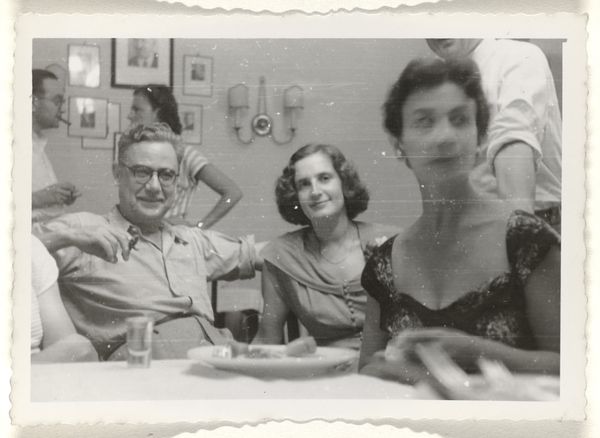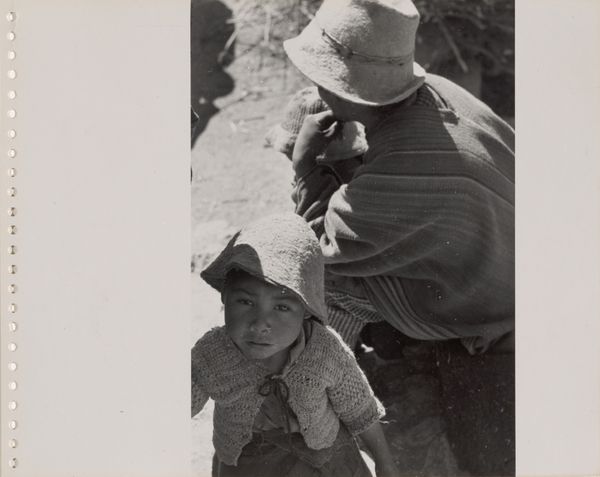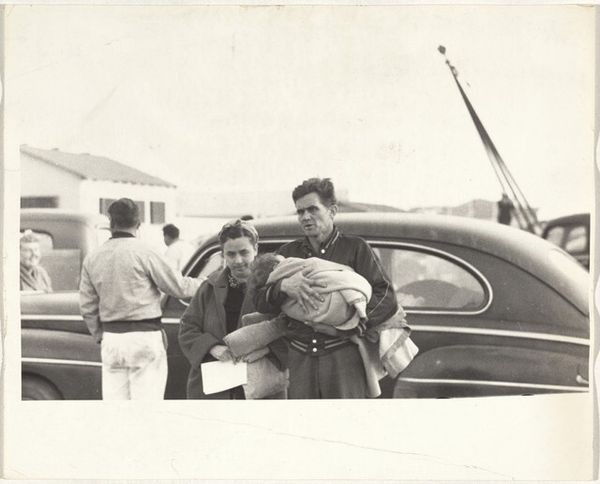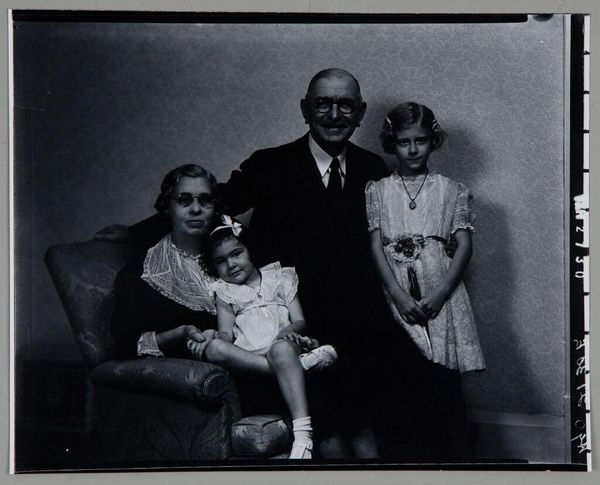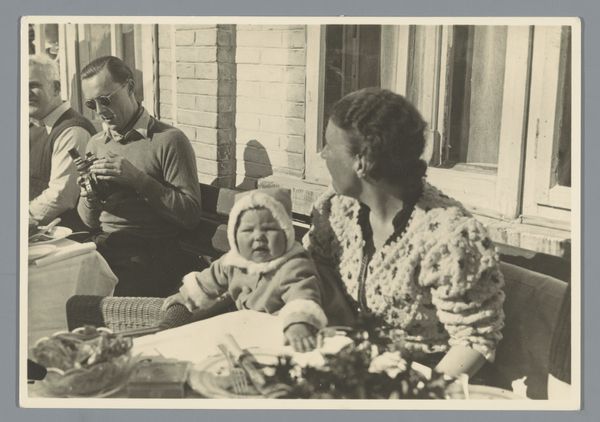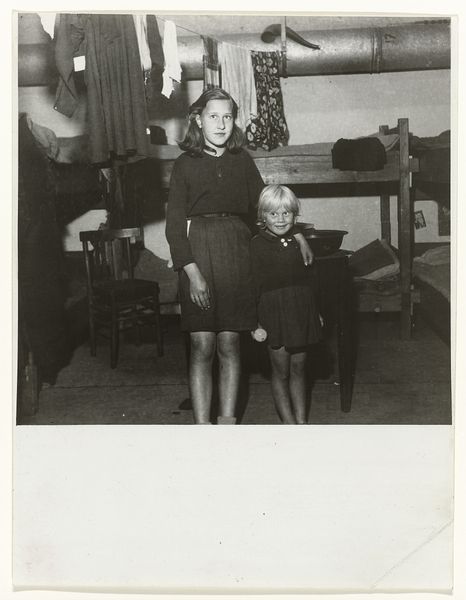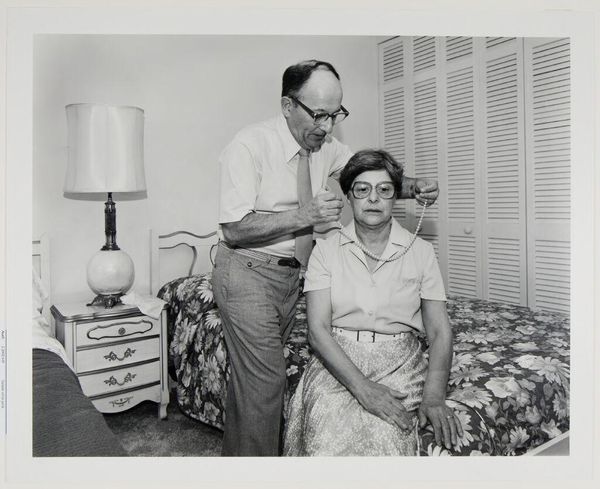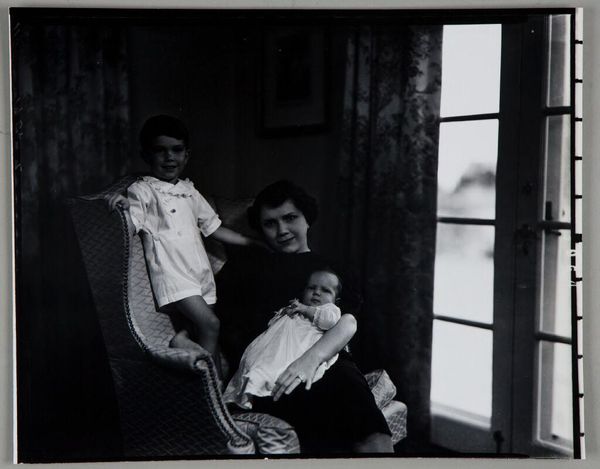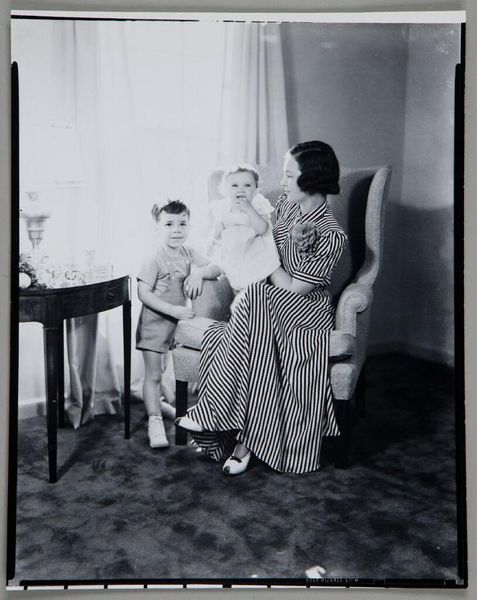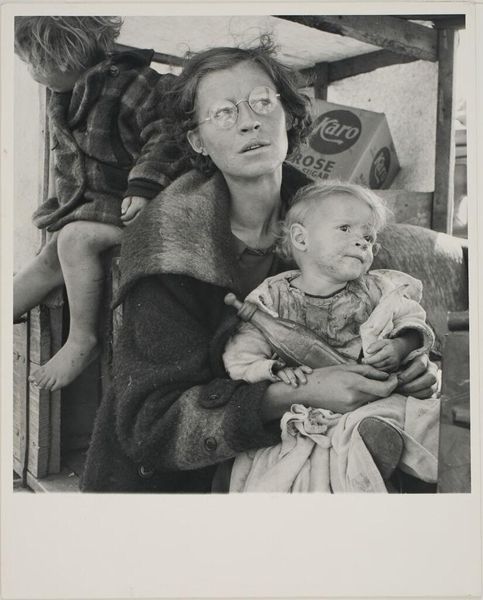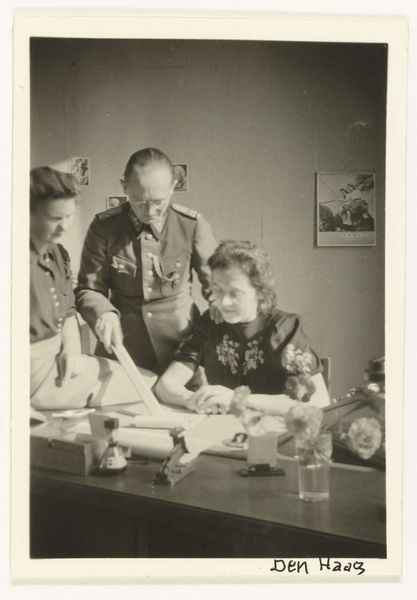
Dimensions: height 18 cm, width 24 cm
Copyright: Rijks Museum: Open Domain
Curator: This photograph by E. de Vries, titled "The Family of ex-Sergeant KNSL J. Wisupuny," was captured between 1951 and 1955. Editor: It has a somewhat stark quality to it, don't you think? The light and shadow create quite a direct emotional feeling—I would almost describe it as tension between intimacy and alienation, enhanced by the contrast in textures, particularly with the fur coat on the woman. Curator: Indeed. The tonal range of this image is limited. Let's note how the stark contrast contributes to the realistic style. We see a composition that, while seemingly candid, adheres to certain portrait conventions, using elements like posing and focus. I’m drawn to how the photographer employed the balance of light and shade in what may have been limited lighting. Editor: To understand this image fully, it is important to grasp the post-colonial context. Here is this Indonesian family being seen through a Westerner's camera, against the backdrop of a complicated, often traumatic history of Indonesian independence and the place of the Dutch in the new nation. How does this arrangement reflect those societal power structures, particularly through pose and attire, which communicate a certain distance despite the photograph's intent? Curator: Interesting. It prompts me to consider how form dictates the transmission of history. Look at how the poses and gaze of the figures—the father's forward look, contrasted against the seated women and children, each embodying both stillness and latent expression. The family is staged in an organized way, and its affect speaks more profoundly. Editor: Exactly! This image could potentially symbolize assimilation and negotiation, highlighting identity, displacement, and the act of witnessing history through photography. The Wisupuny family exists not merely as subjects but as active participants in portraying their story in an ongoing, tumultuous historical narrative. Curator: Analyzing it through a formal lens enriches our appreciation. Understanding the artist's choices relating to style and composition sharpens my awareness of broader stories embedded within. Editor: Agreed, viewing its interplay of these dynamics heightens its impact. Considering it historically invites us to interrogate and acknowledge unspoken dimensions concerning how such images participated actively in colonial visual economies of that time.
Comments
No comments
Be the first to comment and join the conversation on the ultimate creative platform.

